EN

Nativity scene by Delfim Manuel © Inês Aleixo
Popularised by St Francis of Assisi in the 13th century, the nativity scene depicting the birth of Jesus is now a universal element that unites Christian tradition, art and often the personal touch of the person who builds it. ‘Do you have the little donkey from the nativity scene?’, asks a customer who has just entered 215 Rua de Santo Ildefonso looking for figures yo assemble her own nativity scene.
There are hundreds of original nativity scenes at Canjirão Artesanato from all over the country, moulded and painted by skilled hands who transform clay, cork, glass and other unexpected materials into true works of art.
We are greeted by Ricardo Amora, a great connoisseur and promoter of Portuguese handicrafts who, in his small shop where dozens of pieces fit per square metre, gives stage to the talent of around a hundred new and experienced artisans and artists.
After facing the risk of closure four years ago due to the sale of the building, this space remains in the city as a kind of temple of Portuguese folk art, visited not only by collectors and craft lovers, but also by many tourists. At this time of year, with Christmas coming up, demand naturally increases.
The shop specialises in nativity scenes and ‘santos antónios’. ‘We work with a lot of collectors from all over the country; the biggest collectors in the country are customers here, and a lot of people come from Lisbon and some even from down in the Algarve. Some come to Porto on purpose,’ he says, assuring us that “you'll find different things there that you probably won't find anywhere else”. ‘We have a lot of old pieces that are no longer on the market, from artisans who passed away a few decades ago,’ he says.
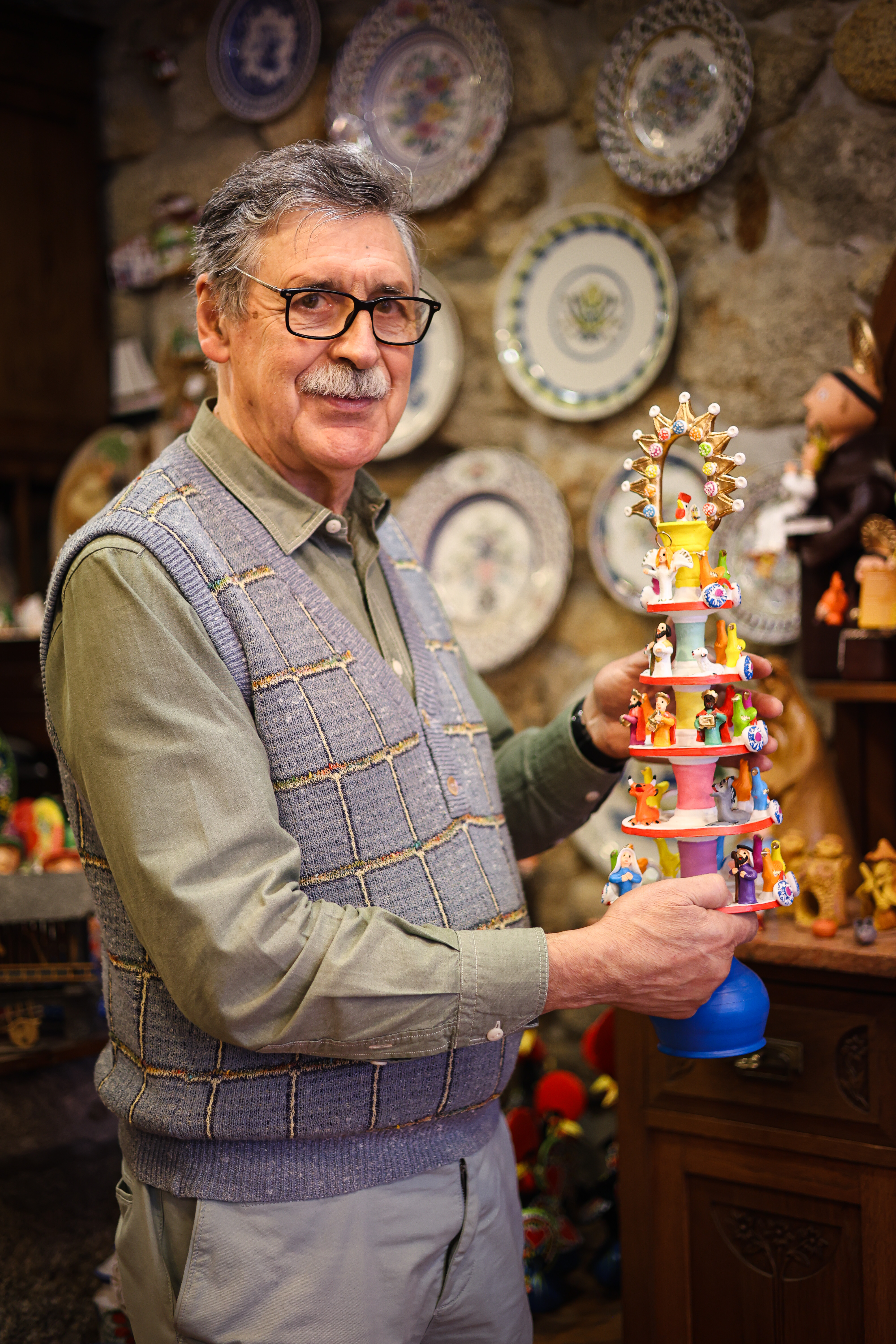
Ricardo Amora with a dovecote Nativity scene by the Baraça brothers © Inês Aleixo
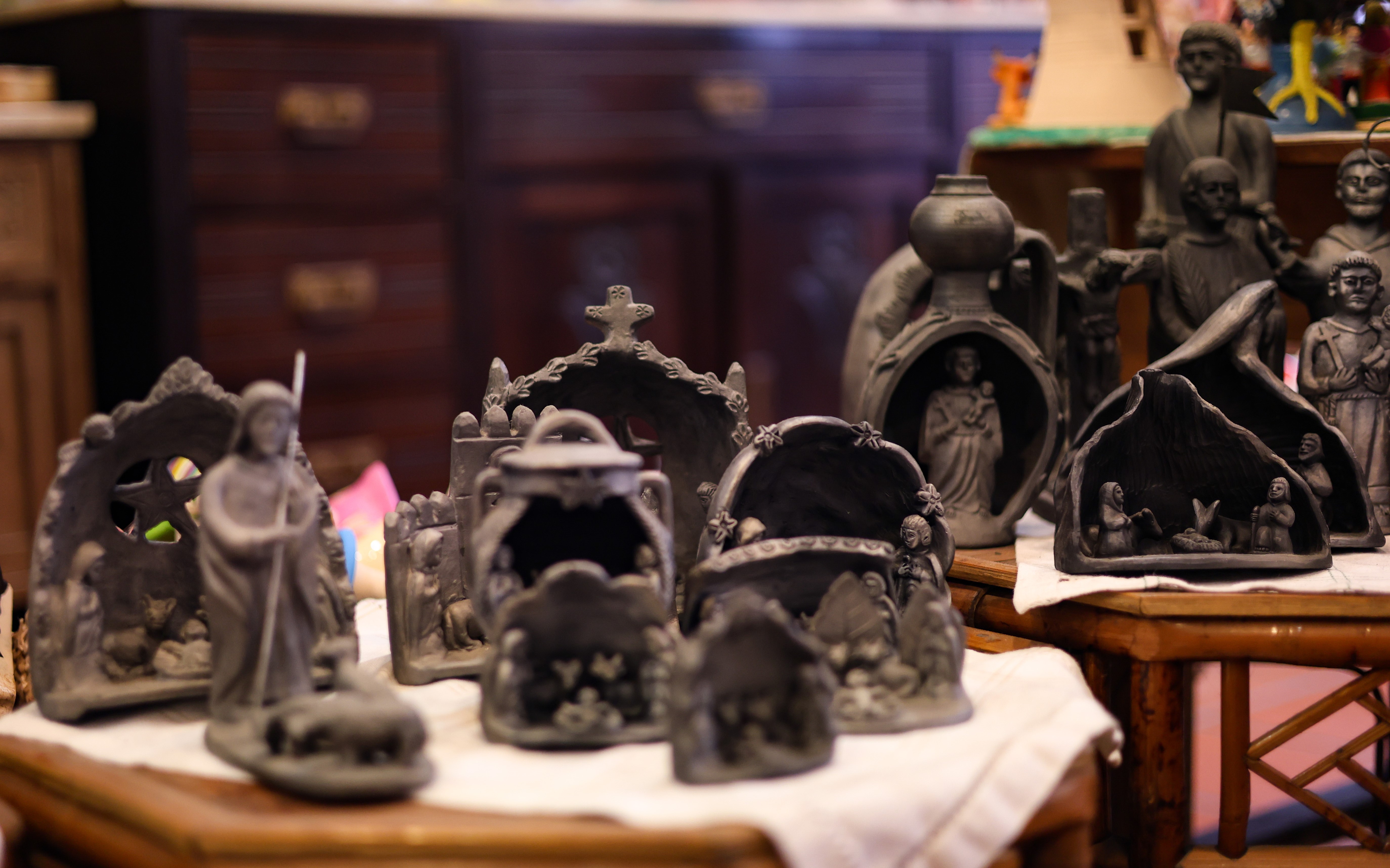
Black clay Nativity scenes by Júlio and João Alonso © Inês Aleixo
Born in Candal, Gaia, this former maths teacher opened Canjirão Artesanato 36 years ago this month. ‘It was a passion of mine, even when I was young, to have a little shop like this. It was crazy, because I don't do this for a living,’ he says. ‘When we opened the shop, we travelled all over the country, from one side to the other, contacting artisans; about 20 years ago, we left some regions, but we still go to the Alentejo and we also work a lot with artisans from the north, especially from Barcelos, Caldas da Rainha, Mafra and various areas that have a tradition in pottery,’ he explains. ‘We've tried to be different from the start,’ he emphasises.
Ricardo is proud to preserve and share the work of artisans who have marked the history of national handicrafts. An example of this is the section dedicated to the ‘Ramalho family’, i.e. the descendants of Rosa Ramalho, an emblematic figure in traditional Portuguese pottery, namely her granddaughter, Júlia Ramalho, who ‘stopped working four or five years ago’, and her great-grandchildren Teresa and António Ramalho. ‘This is one of the shop's priorities,’ he admits. There is also a section dedicated to the cribs and figurines of Júlio Alonso, who died recently aged 96, and João Alonso, his son, both masters of black clay. ‘There are three generations of artisans in the same family; I'm missing some of my grandson's work here,’ he says, adding that he likes to “bring generations together”.
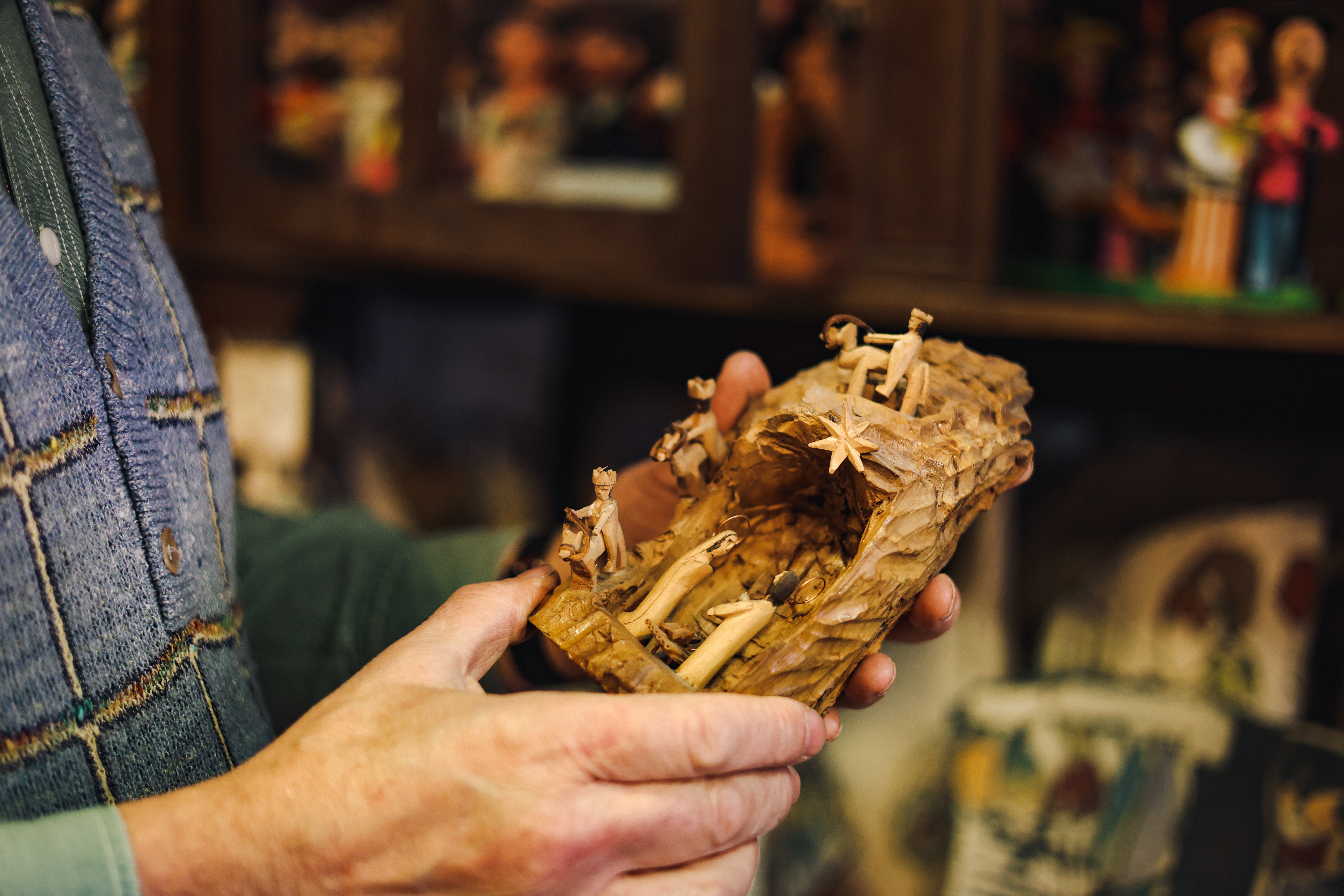
Nativity scene carved into wood by José Matos
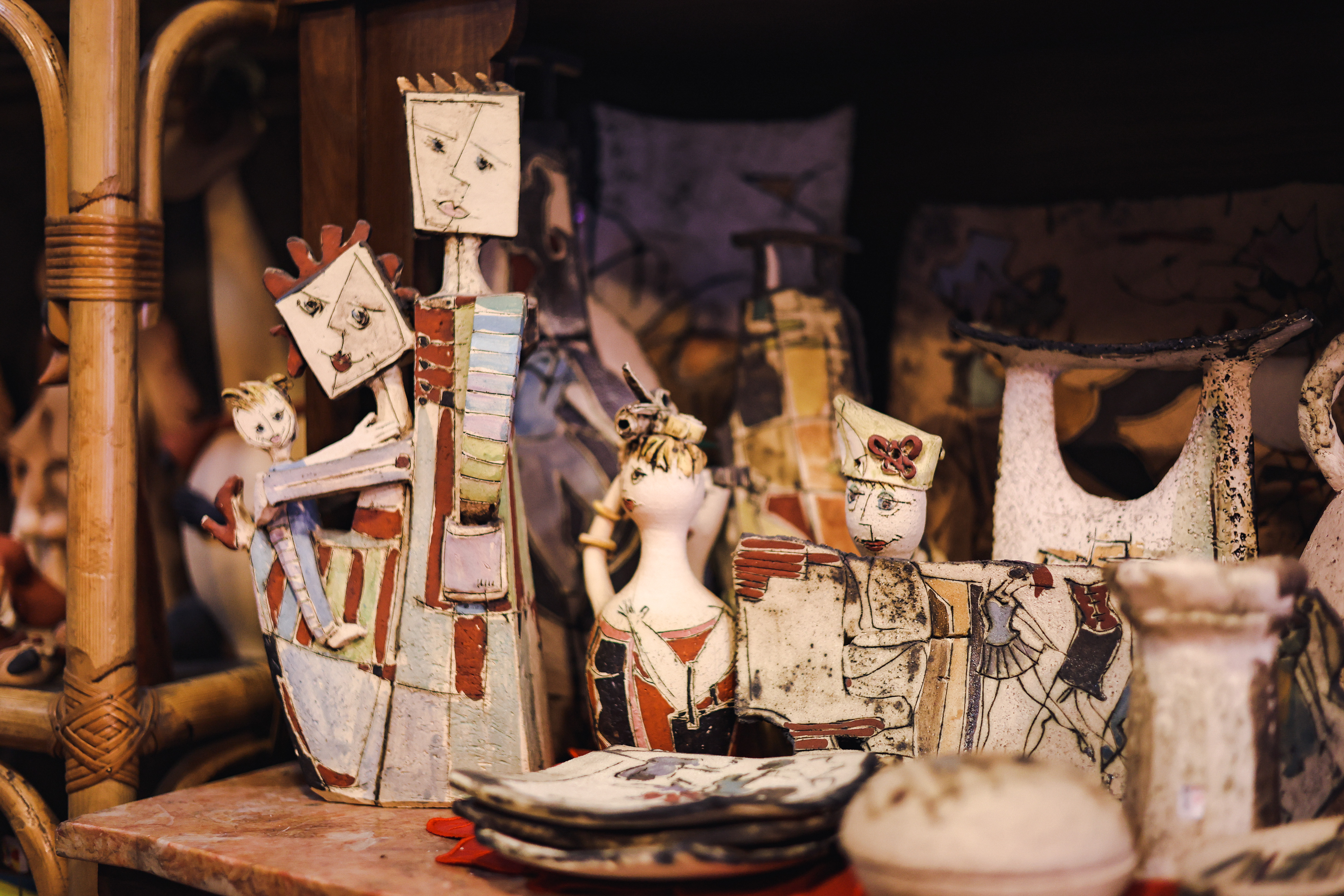
Nativity scene and toher works by Ana Sobral © Inês Aleixo
Ricardo keeps a notebook in which he writes down the biographical details of the artisans and is often sought out by Fine Arts students looking to find out more about Portuguese crafts, as well as by people who ask for help identifying the authorship of pieces they've bought that aren't signed.
Among the many national artists and craftspeople, the expert highlights the work of ceramicist Delfim Manuel, from Santo Tirso, who has just won the Grand Career Prize of the National Crafts Prize 2023. ‘In miniatures, he's one of the best in the country’. ‘This is a totally different kind of work, very detailed and meticulous,’ he tells us, pointing to a crib of his that costs 1,300 euros. ‘Who does this? There's no-one else doing it.’
Ricardo also praises the work of Ana Sobral, an artist from Caldas da Rainha, who ‘painstakingly draws on the ceramics themselves’. ‘She was an artisan and studied Fine Arts at ESAD in Caldas, but she already had her own vein. She was always a bit advanced; she's very good. She draws on the paste with a stylus and no two pieces are the same. See here?’ she points out.
‘Nativity scenes are in great demand and, in recent years, with the demand from collectors, artisans have been trying to make all kinds of nativity scenes.’
Each crib reflects the creativity of each craftsman: there are cribs that are an adaptation of dovecotes, by the Baraça Brothers from Barcelos, but also mini cribs with the figures dressed in typical costumes from the Portuguese regions, by a couple of craftsmen from Santarém, and even more contemporary pieces, with José and Maria on scooters, or with Caretos from Podence, and in more stylised versions, like the cribs by Vítor Lopes, also from Caldas da Rainha. ‘I've sold many to America; the Americans loved this totally stylised one, and he's very creative,’ he says.
The shopkeeper also shows us the work of Carlos Dias, a craftsman from Barcelona: ‘As he's colour blind and can't distinguish between colours, he works with two types of paste: fine porcelain, like Limoges, which is the white part, and a stoneware paste, which then gives these nuances; they're always different pieces.’
Some artisans use materials such as corn leaves, cork bungs, wood scraps and waste brought in by the sea to create nativity scenes, combining creativity and sustainability.
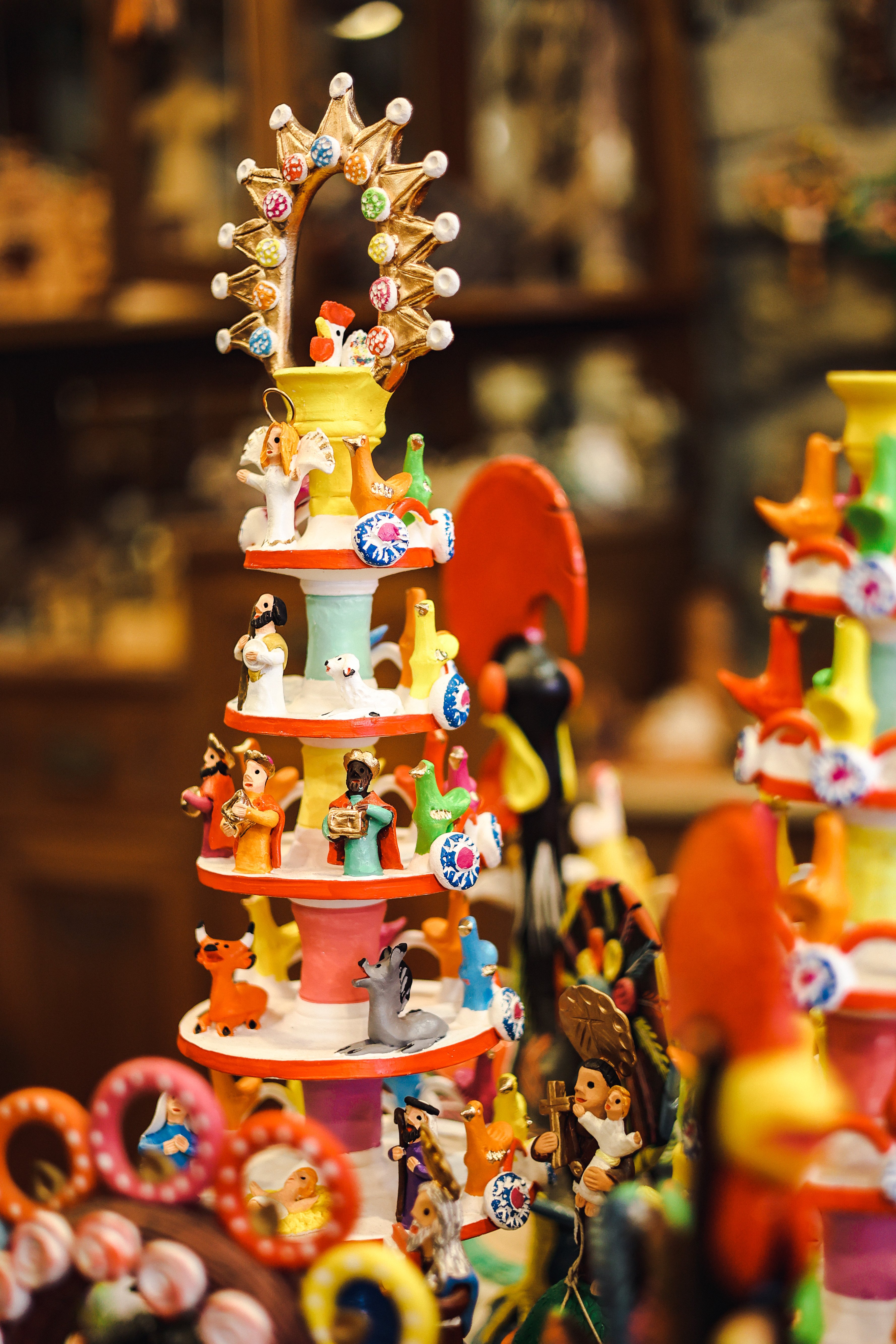
Dovecote nativity scene by the brothers Baraça
With almost four decades of experience in the business, Ricardo believes that there has been an evolution in Portuguese handicrafts, ‘especially with the increase in fairs, where artisans began to see what others were doing’.
The collector says that, together with his wife, Deolinda Rodrigues, who has a degree in Fine Arts, he trained some of the artisans. ‘We'd go to them and give them tips on how to make changes; there's more training now, but in the old days there was a lack of aesthetic training, design training, and they made horrendous things,’ he laughs. ‘So we'd go and say: ‘don't do it like this, cut here, don't do this little thing, - ouch! but it's so funny, they'd say. - But many of them kept doing the same thing. Horrible things,’ he insists.
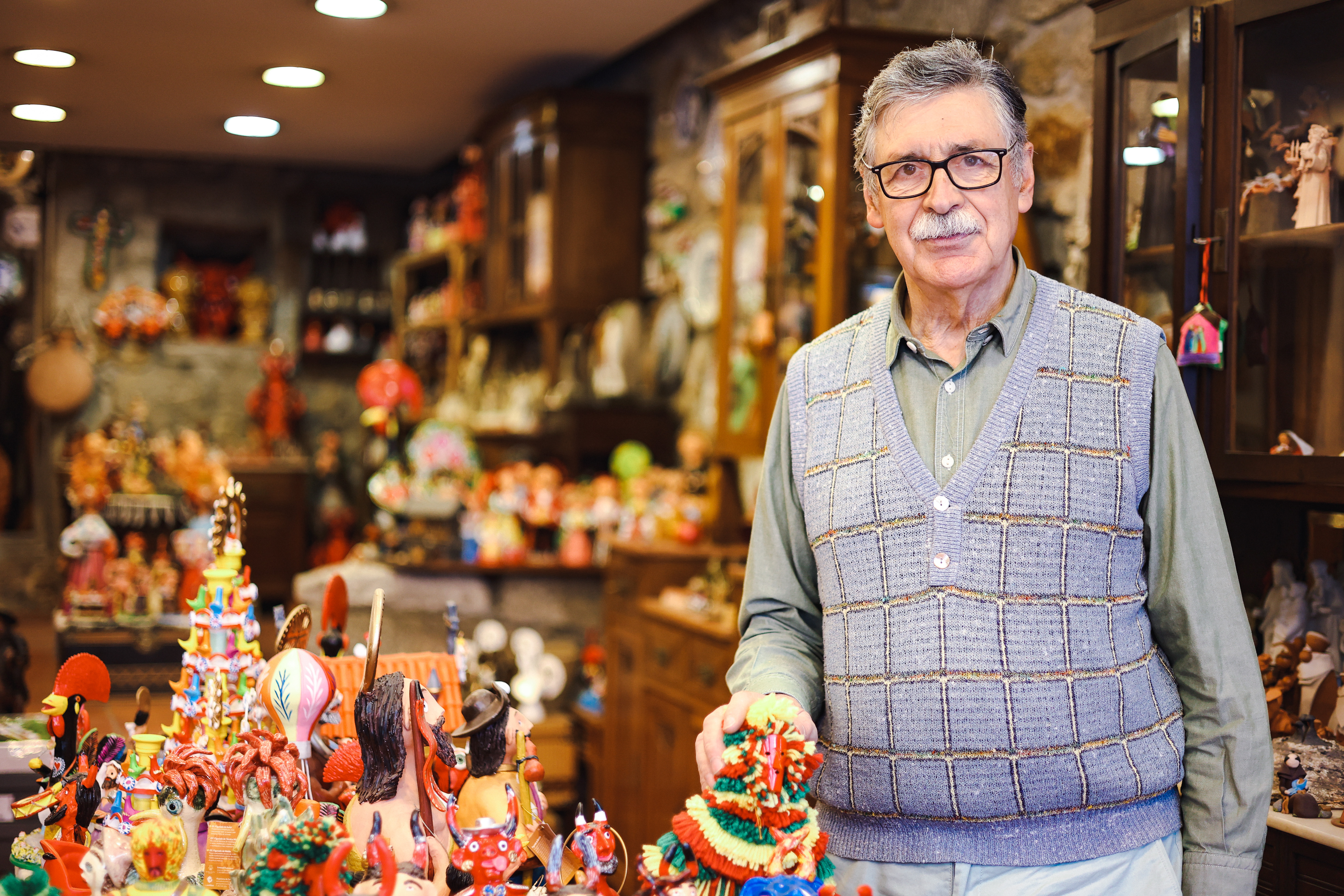
by Gina Macedo
Share
FB
X
WA
LINK
Relacionados


